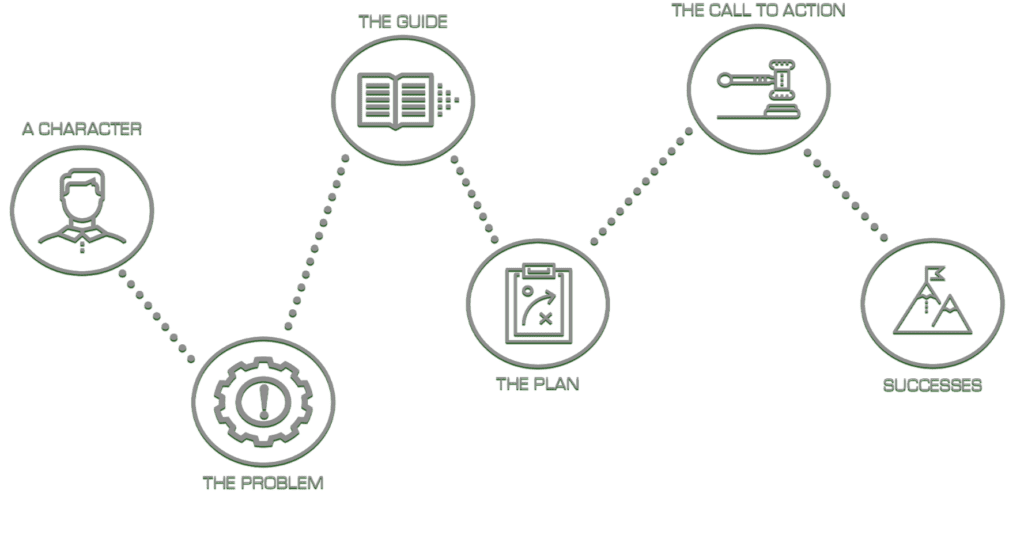
In a world inundated with data, facts, and figures, the human soul seeks connection, something that resonates with the core of our being. That’s where the Business Storytelling Framework enters the picture. It’s an ancient art, one that’s at the heart of human communication. In a business setting, storytelling transcends the transactional dynamics, offering a human touch to the brand. It’s not just about what you sell, but the tale you tell that makes the audience lean in closer.
The Power of Storytelling:
The essence of Business Storytelling Framework isn’t confined to captivating narratives alone; it’s a vehicle that drives the ethos, values, and vision of a brand into the hearts of the audience. Here’s how:
- Building Trust:
- Trust isn’t handed over; it’s earned. When you narrate your business’s journey, the challenges faced, and the values upheld, you invite your audience into your world. Businesses like TOMS have exemplified this by sharing their story of donating a pair of shoes for every pair sold, forging a strong bond of trust with their audience.
- Creating an Emotional Connection:
- Stories have the power to evoke emotions – joy, empathy, inspiration. When your narrative resonates with your audience’s emotions, a deeper connection is forged. This connection transcends the usual customer-business dynamics, creating a community of loyal followers.
- Educating Your Audience:
- A well-crafted story can elucidate the unique value proposition of your business, educating the audience about how you solve a problem or fill a need in the market. It’s an engaging way to illustrate the benefits of your offerings without a hard sell.
- Differentiation:
- In a competitive market, standing out is crucial. Your story is unique; no other business has walked in your shoes. Sharing your narrative differentiates you from the competition, offering a fresh perspective to your audience.
- Inspiring Action:
- A compelling story can inspire action, be it in terms of sales, social shares, or advocacy for your brand. It’s about moving people from mere spectators to active participants in your business journey.
The question is then, how is this Business Storytelling Framework done? Take a look at this image…

This illustration originates from the widely recognized StoryBrand Framework developed by Donald Miller. I have employed this particular framework repeatedly with my clients. For accurate attribution, here’s a succinct explanation of each element within this framework.
- A Character:
- Identify the main character in your story, which is your customer. Understand their desires and the problems they face.
- Has a Problem:
- Articulate the problem that your customer is facing, which your business is solving.
- And Meets a Guide:
- Present your business as the guide that helps the customer solve their problem, showcasing your understanding and empathy towards their situation.
- Who Gives Them a Plan:
- Offer a clear and simple plan that the customer can follow to solve their problem.
- Calls Them to Action:
- Encourage your customers to take action with a clear and compelling call to action.
- That Helps Them Avoid Failure:
- Highlight the negative consequences of not solving the problem and how your business helps in avoiding those.
- And Ends in a Success:
- Showcase the positive outcomes and success your customers will experience when they engage with your business to solve their problem.
The StoryBrand Framework emphasizes simplifying your message, focusing on the customer’s journey, and positioning your business as the guide to help them overcome their challenges and achieve their goals.
What are you currently doing in your business to help better understand the customer’s connection to your story? Part 2 – (Next week’s blog content) will further develop what strategies to implement to build a powerful StoryBrand for your business. (Stay Tuned)
